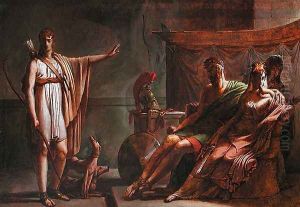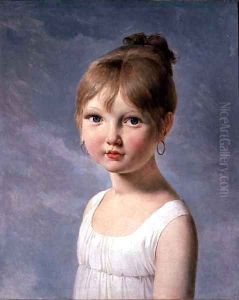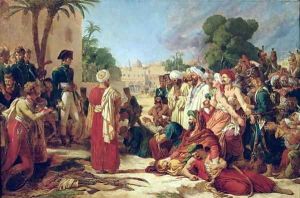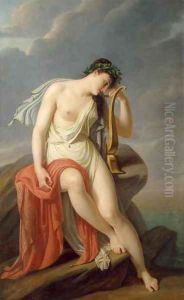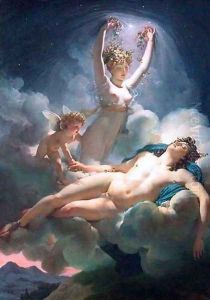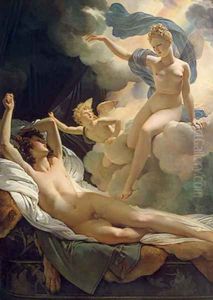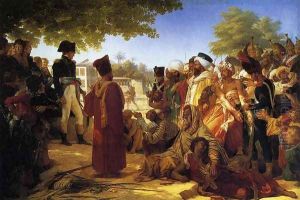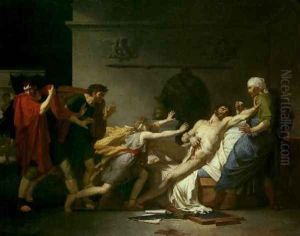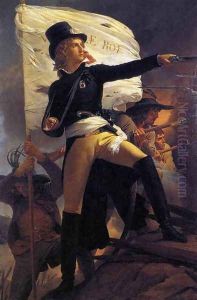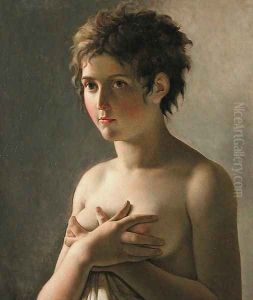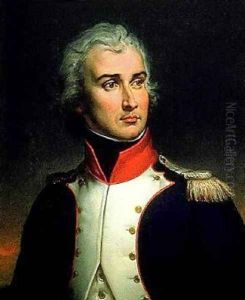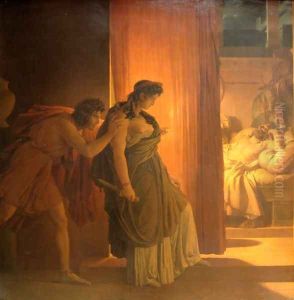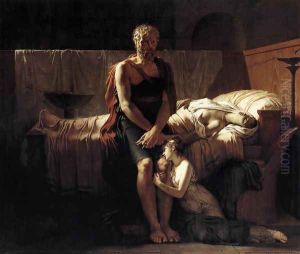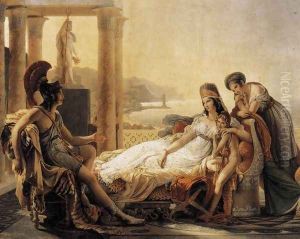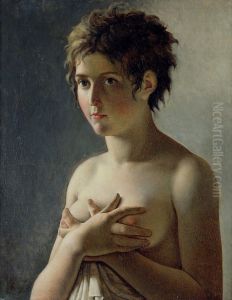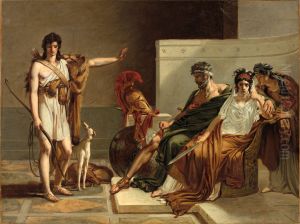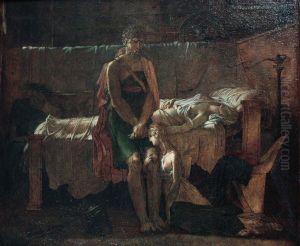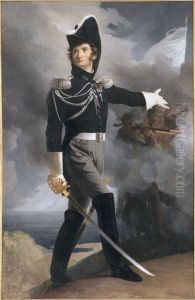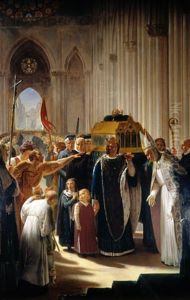Pierre-Narcisse Guerin Paintings
Pierre-Narcisse Guérin was a prominent French painter born on May 13, 1774, in Paris, France. He is best known for his classicist paintings, reflecting the influence of Jacques-Louis David but also incorporating elements of Romanticism. Guérin's early education in art was under the guidance of his uncle, a minor artist, which led him to develop an early passion for painting. He further honed his skills at the Royal Academy of Painting and Sculpture in Paris, where he was significantly influenced by the prevailing Neoclassical trends.
Guérin's career took a significant turn when he won the prestigious Prix de Rome in 1797 for his painting 'Marcus Sextus,' which allowed him to study in Rome at the French Academy. His time in Italy was instrumental in shaping his style, as he was deeply moved by the works of the Renaissance and the monuments of antiquity. Upon his return to Paris, Guérin achieved considerable success and recognition. He became known for his masterful use of color, composition, and emotional depth, characteristics that were evident in works such as 'Aurora and Cephalus' and 'Phaedra and Hippolytus.'
Throughout his career, Guérin faced competition from his contemporaries but managed to secure important commissions, including works for Napoleon Bonaparte and the restoration French monarchy. His contributions to French art were recognized with his appointment as a professor at the École des Beaux-Arts in Paris, where he influenced a new generation of artists.
Guérin's personal life and career were intertwined with the tumultuous events of his time, including the French Revolution, the Napoleonic Wars, and the Restoration period. These events influenced the themes and expressions in his art, often reflecting the complexities and emotions of his era.
Pierre-Narcisse Guérin passed away on July 6, 1833, in Rome, Italy, leaving behind a legacy that captured the transition from Neoclassicism to Romanticism in French art. His works are celebrated for their emotional intensity, technical proficiency, and historical significance, securing his place among the notable artists of the 19th century.
